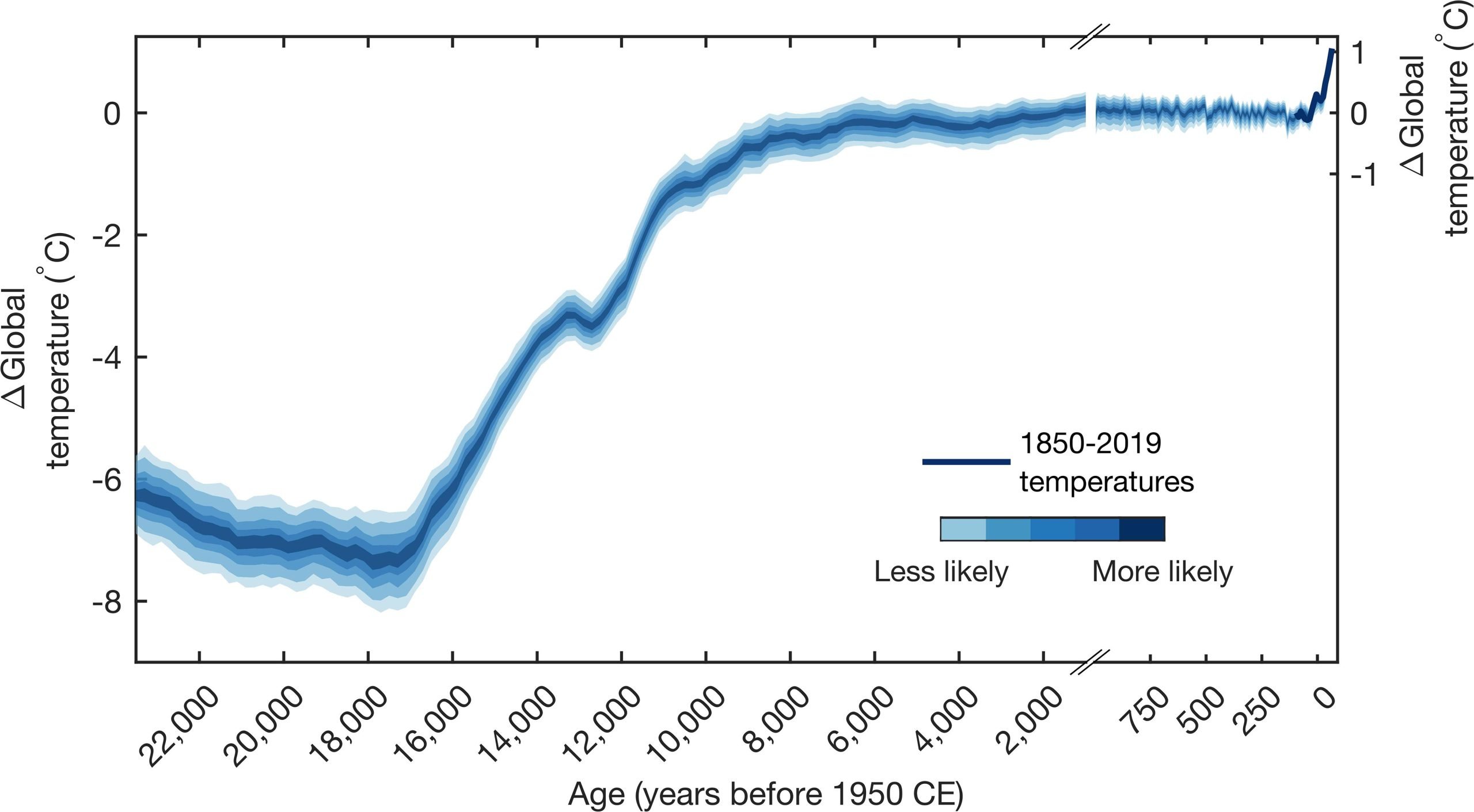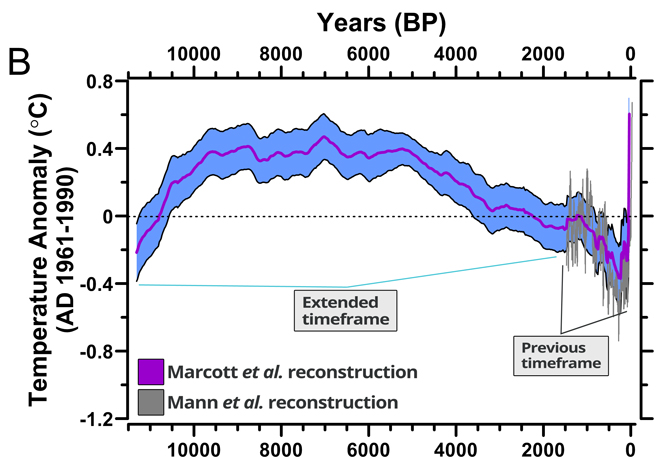Navigation
Install the app
How to install the app on iOS
Follow along with the video below to see how to install our site as a web app on your home screen.
Note: This feature may not be available in some browsers.
More options
Style variation
You are using an out of date browser. It may not display this or other websites correctly.
You should upgrade or use an alternative browser.
You should upgrade or use an alternative browser.
How do we Know Human are Causing Climate Change?
- Thread starter abu afak
- Start date
abu afak
ALLAH SNACKBAR!
- Mar 3, 2006
- 8,007
- 2,777
- 315
- Thread starter
- #2,942
So you acknowledge just saying "Interglacial" (Thousands of times) is irrelevant withOUT plotting the data within.Crossplot CO2 with temperature.
Correct?
So that hundreds/thousands of those posts of Yours are MEANINGLESS TROLLS.
I have posted data/Graphics many times.
Everyone now knows you are a Piece of Shlt TROLL. (and even you agree.)
`
If you understood what the IPCC says about climate sensitivity you would know that it is 100% true that the models the IPCC relies upon predict that 2/3rds of future warming is attributed to increased water vapor and 1/3rd of the future warning is due to the radiative forcing of CO2. That's climate sensitivity. Why are you arguing against the IPCC?So you acknowledge just saying "Interglacial" (Thousands of times) is irrelevant withOUT plotting the data within.
Correct?
So that hundreds/thousands of those posts of Yours are MEANINGLESS TROLLS.
I have posted data/Graphics many times.
Everyone now knows you are a Piece of Shlt TROLL. (and even you agree.)
`
abu afak
ALLAH SNACKBAR!
- Mar 3, 2006
- 8,007
- 2,777
- 315
- Thread starter
- #2,945
abu afak why don't you know about climate sensitivity?
H2O vs. CO2 Yet another observation the AGW Cult will ignore
and they think Antarctic glaciers are about to "slide off into the oceans," never mind they are already BELOW SEA LEVEL... And some insist that in the state of FLA, nobody ever uses the word CANES We all know that manmade CO2 is causing the undersea volcanoes to get active
www.usmessageboard.com
`
EMH
Diamond Member
- Apr 5, 2021
- 22,301
- 13,517
- 2,288
- Banned
- #2,946
Under the 2+ mile thick ice is water. Wow. 5 foot tube worms live there. Wow....
IS there any water on Antarctica from sea level up.... No....
They claim it is "melting" and they can only show us ICE, ICEBERGS, and stories by CNN of "water" under the 2+ mile thick ice...
OK... if you say so...
Grumblenuts
Gold Member
- Oct 16, 2017
- 15,429
- 5,225
- 210
3000+ billion tons of ice lost from Antarctic Ice Sheet over 25 years
Scientists have calculated that the fastest changing Antarctic region?-?the Amundsen Sea Embayment?-?has lost more than 3,000 billion tonnes of ice over a 25-year?period.??
www.sciencedaily.com
Toddsterpatriot
Diamond Member

3000+ billion tons of ice lost from Antarctic Ice Sheet over 25 years
Scientists have calculated that the fastest changing Antarctic region?-?the Amundsen Sea Embayment?-?has lost more than 3,000 billion tonnes of ice over a 25-year?period.??www.sciencedaily.com
Scary!!!
How many billions of tons left?
EMH
Diamond Member
- Apr 5, 2021
- 22,301
- 13,517
- 2,288
- Banned
- #2,950

3000+ billion tons of ice lost from Antarctic Ice Sheet over 25 years
Scientists have calculated that the fastest changing Antarctic region?-?the Amundsen Sea Embayment?-?has lost more than 3,000 billion tonnes of ice over a 25-year?period.??www.sciencedaily.com
The sky is falling
The ice is melting
If that statement were actually true, water would be at Statue of Liberty's feet....
In fact, YOU cannot show us ONE SINGLE PHOTO of a landmark on Earth sinking. You have a PhD in PARROTING FUDGED FRAUD, but you do not have a single photo...
The planet is in an interglacial period. That's what happens during an interglacial period.It hasn't been getting warmer since the I-Rev?
Not been getting warmer for the last 40/50 years since diagnosis/predictions?
`
I've got a question for you. What value of what parameter marks the point where a glacial period ends and the interglacial begins? And what marks the end of an interglacial and the beginning of the next glacial period?The planet is in an interglacial period. That's what happens during an interglacial period.
Grumblenuts
Gold Member
- Oct 16, 2017
- 15,429
- 5,225
- 210
If you say soThe sky is falling
abu afak
ALLAH SNACKBAR!
- Mar 3, 2006
- 8,007
- 2,777
- 315
- Thread starter
- #2,956
And it's a Dingbat claim by Ding.I've got a question for you. What value of what parameter marks the point where a glacial period ends and the interglacial begins? And what marks the end of an interglacial and the beginning of the next glacial period?
And he's made the stupid/vacuous/nonsense one-line post Hundreds of times.
The fact we are in an interglacial period would NOT preclude a human caused AGW
..... or SPIKE within it.
So it's an IRRELEVANT statement. (typical one-line-ding)
In fact, it looks very normal interglacial alone... UNTIL.. the Industrial Revolution.
Marcott, 11,000 years of interglacial.
with only one Anomalous point: us.
(and it's spiked higher recently since the y2k 2000 graph made in 2003.)

`
Last edited:
Temperature and sea level which is a function of temperature. Or if you prefer... latitudinal thermal gradients.I've got a question for you. What value of what parameter marks the point where a glacial period ends and the interglacial begins? And what marks the end of an interglacial and the beginning of the next glacial period?
Okay. You've identified some parameters, but not the values (or polarity or rates) that might mark the transitions between glacial and interglacial. Where I'm headed, of course, is for you to tell us about the latest state changes. You state we are in an interglacial. When did that begin (with reference to your parameters) and when do you think it might end? I ask this because, as you know, prior to the industrial revolution, global temperatures had been declining for 5,000 years. So I don't see the sense behind claiming that the observed warming is simply a feature of a normal interglacial period. It seems to me that we were past the interglacial temperature peak and were headed down the hill towards the next glacial period.Temperature and sea level which is a function of temperature. Or if you prefer... latitudinal thermal gradients.
View attachment 799037
Here are a bunch of global temperature graphs. You've seen them all a dozen times before so I'm not going to bother with the sourcing. They all support my claim: that we've passed the interglacial peak and were cooling prior to AGW. That refutes your claim that what we are seeing is a feature of interglacial warming.

NOTE: the slope on this graph above is much less discernible at least partially due to its 10C vertical scale vs the 1.5 - 2C scale of the other three plots.


The geologic record is littered with examples of warming and cooling trends inside of glacial and interglacial periods.Okay. You've identified some parameters, but not the values (or polarity or rates) that might mark the transitions between glacial and interglacial. Where I'm headed, of course, is for you to tell us about the latest state changes. You state we are in an interglacial. When did that begin (with reference to your parameters) and when do you think it might end? I ask this because, as you know, prior to the industrial revolution, global temperatures had been declining for 5,000 years. So I don't see the sense behind claiming that the observed warming is simply a feature of a normal interglacial period. It seems to me that we were past the interglacial temperature peak and were headed down the hill towards the next glacial period.
Here are a bunch of global temperature graphs. You've seen them all a dozen times before so I'm not going to bother with the sourcing. They all support my claim: that we've passed the interglacial peak and were cooling prior to AGW. That refutes your claim that what we are seeing is a feature of interglacial warming.


NOTE: the slope on this graph above is much less discernible at least partially due to its 10C vertical scale vs the 1.5 - 2C scale of the other three plots.


Fine, but we weren't experiencing a warming trend prior to the Industrial Revolution and the warming rate since then exceeds by 5-8 fold the fastest warming or cooling rates seen in the past 3 million years. And, of course, these warming and cooling phases have CAUSES and the ONLY cause for warming since the Industrial Revolution has been the greenhouse effect acting on human CO2 emissions.The geologic record is littered with examples of warming and cooling trends inside of glacial and interglacial periods.
Similar threads
- Replies
- 11
- Views
- 454
- Replies
- 10
- Views
- 154
New Topics
-
Alberta to leave Canada and form energy alliance with the United States?
- Started by justoffal
- Replies: 1
-
-
-
-